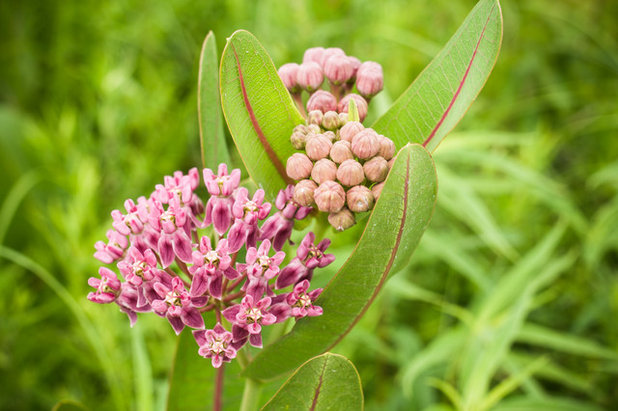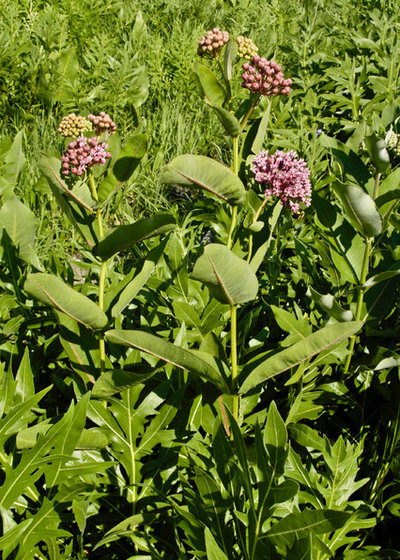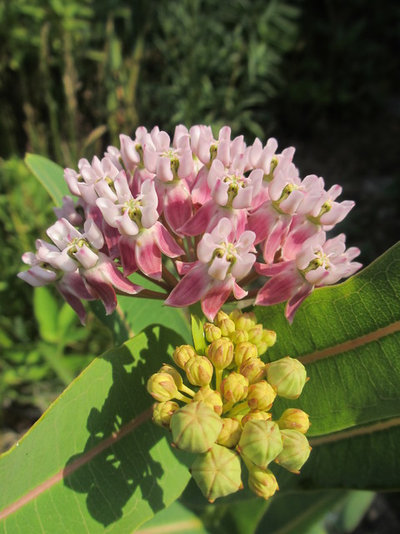Milkweed (
Asclepias spp) is an essential native plant that many insects need to reproduce, including monarch butterflies. Prairie milkweed (
Asclepias sullivantii) is not an aggressive plant and will only slowly spread after several years of establishing its deep taproot. Give this well-behaved beneficial insect magnet a try, and see how the local wildlife in the northern and central tallgrass prairie region enjoys it.
 Botanical name: Asclepias sullivantiiCommon names:
Botanical name: Asclepias sullivantiiCommon names: Prairie milkweed, Sullivant’s milkweed
Origin: Native from southeast North Dakota east through Wisconsin and Michigan and south through Ohio, Illinois and northeast Oklahoma
Where it will grow: Hardy to -30 degrees Fahrenheit (USDA zones 4 to 7; find your zone or find your ecoregion)
Water requirement: Medium to slightly moist soil
Light requirement: Full sun
Mature size: About 3 feet tall and 1 foot wide
Benefits and tolerances: Fairly adaptable but prefers consistent soil moisture; good for loam to clay soils
Seasonal interest: Vanilla-scented blooms in midsummer; unique leaf structure during the growing season
When to plant: Potted or bare-root plants can be put in from late spring to late fall; sow seeds in late fall through winter.
Photo by Justin Meissen

Frank Mayfield
Distinguishing traits. This milkweed is long lived and care free. It has sweetly scented vanilla blooms in midsummer and reaches a modest 3 feet in height. Prairie milkweed creates a deep taproot to survive periods of drought, and will lose its lower leaves in excessively dry conditions. Its leaves can become 6 inches long and 3 inches wide, like those of common milkweed, but are smooth on both sides — making it a unique addition to a garden that celebrates leaf size and texture.
How to use it. It is perfect among almost any kind of border and will slowly creep by a very few scattered underground shoots; I enjoy seeing where one or two new stalks appear every year in my garden as older ones fade away.
Prairie milkweed is native to the tallgrass prairie region of the northern and central U.S., a region that has lost 97 to 99 percent of its tallgrass ecosystem. In fact, prairie milkweed is threatened in Minnesota, Wisconsin and Michigan.

Benjamin Vogt / Monarch Gardens
Planting notes. Spring and fall planting are best for potted plants, but midsummer is fine if you keep up on watering the first year. Clay to loam soil is perfect, though you’re likely to see more plants in a loose, loamy soil. Seeding can occur anytime past a few hard freezes in fall.
You’ll see a diversity of native bees gathering nectar from prairie milkweed, as well as an entire community of insects that use the leaves to raise their young. Butterflies, moths, flies, ants and hummingbirds all seek out the blooms as well. Although prairie milkweed is hard to pollinate due to its complex flower shape, any seeds that do develop with this rare, tallgrass prairie native should be treasured.





